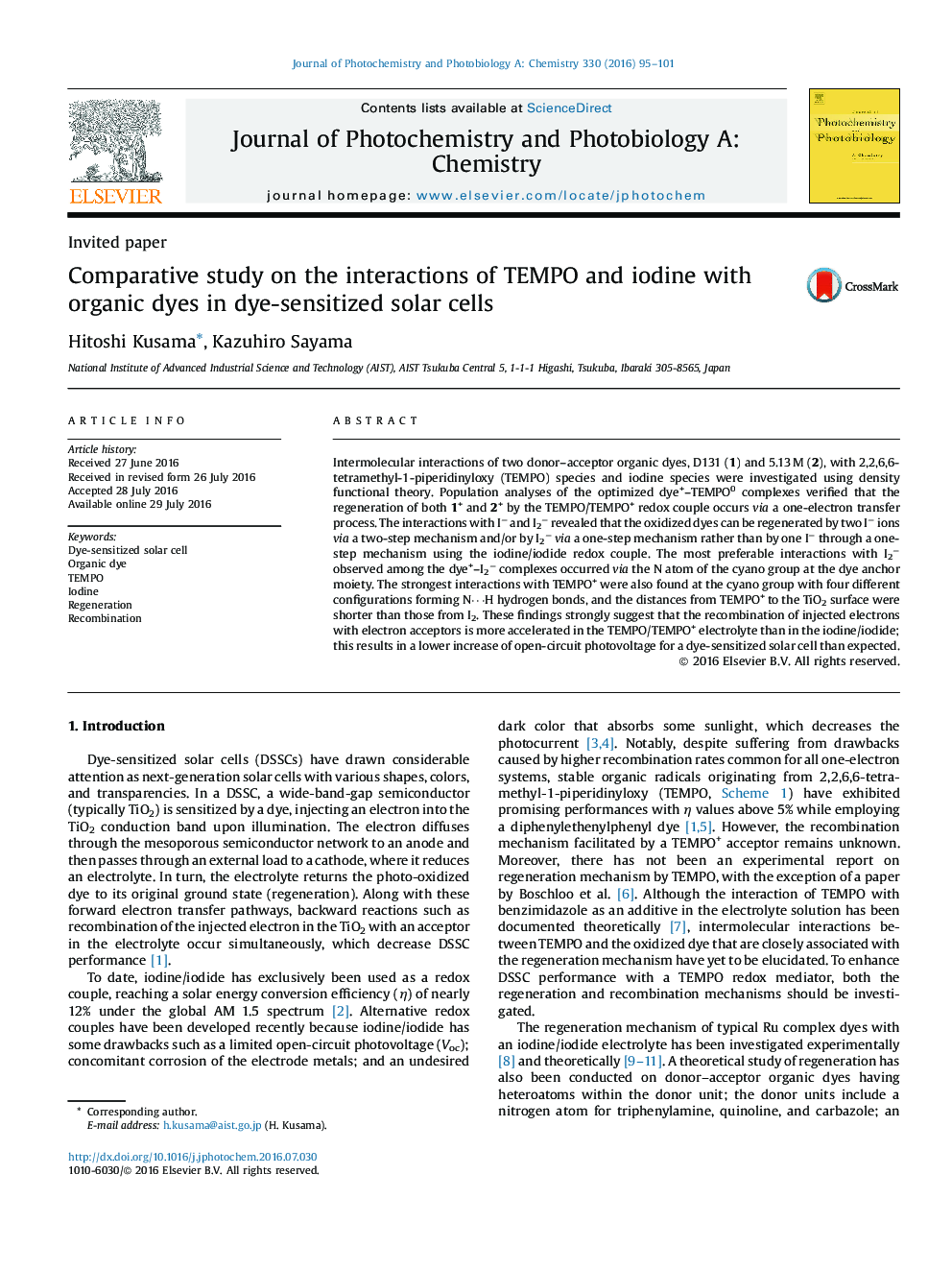| Article ID | Journal | Published Year | Pages | File Type |
|---|---|---|---|---|
| 6492933 | Journal of Photochemistry and Photobiology A: Chemistry | 2016 | 7 Pages |
Abstract
Intermolecular interactions of two donor-acceptor organic dyes, D131 (1) and 5.13 M (2), with 2,2,6,6-tetramethyl-1-piperidinyloxy (TEMPO) species and iodine species were investigated using density functional theory. Population analyses of the optimized dye+-TEMPO0 complexes verified that the regeneration of both 1+ and 2+ by the TEMPO/TEMPO+ redox couple occurs via a one-electron transfer process. The interactions with Iâ and I2â revealed that the oxidized dyes can be regenerated by two Iâ ions via a two-step mechanism and/or by I2âvia a one-step mechanism rather than by one Iâ through a one-step mechanism using the iodine/iodide redox couple. The most preferable interactions with I2â observed among the dye+-I2â complexes occurred via the N atom of the cyano group at the dye anchor moiety. The strongest interactions with TEMPO+ were also found at the cyano group with four different configurations forming Nâ¯H hydrogen bonds, and the distances from TEMPO+ to the TiO2 surface were shorter than those from I2. These findings strongly suggest that the recombination of injected electrons with electron acceptors is more accelerated in the TEMPO/TEMPO+ electrolyte than in the iodine/iodide; this results in a lower increase of open-circuit photovoltage for a dye-sensitized solar cell than expected.
Related Topics
Physical Sciences and Engineering
Chemical Engineering
Bioengineering
Authors
Hitoshi Kusama, Kazuhiro Sayama,
